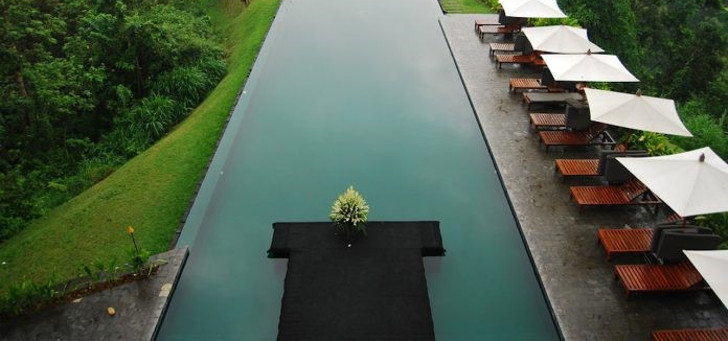A snapshot of the Indonesian pool market

Following our recent Pool Summit in Asia, we’ve decided to focus on one of the region’s most exciting pool markets: Indonesia.

Located on the equator with a year-round tropical climate, Indonesia is home to over 250 million people. GDP for 2014 was an impressive $888,648 billion USD. Data for 2016 is expected to show slight growth in the economy after several years of slowdown. What’s more, lower inflation and a more robust rupiah mean a more attractive financial environment. Add a fast-emerging middle class and you have an interesting market for the pool and spa industry. Despite uncertainties over economic policy, Indonesia offers many potential opportunities. Let’s take a look at what’s happening in our sector.
Growing interest – and a growing industry
Right now, the news is good for pool and spa professionals. Pools and waterparks are becoming increasingly popular – in fact, the list of top Asian waterparks was expanded from 15 to 20 properties in 2015. Eight of the top 20 waterparks worldwide are based in the region. On a smaller scale, luxury hotels are developing: most 4* and 5* hotels will have a pool that’s open to the public for a charge of between 30,000 and 75,000 Rp per day. With average temperatures of between 23 and 28 degrees Celsius (depending on altitude) and humidity between 70 and 90%, a quick dip is ideal way to refresh and relax.
Opportunities in Construction?
In 2015, there were 20,000 new condominiums built and 338 new serviced apartments. Most apartments and housing complexes have their own pool shared by residents. These figures reveal stagnant development in the residential property market. However, industry professionals still have plenty to smile about.
A must‑have for homeowners
Despite a stagnant development in residential property market, the home and garden demand improved in 2015. This was due to an ongoing shift towards modern, convenience-led lifestyles in urban areas. Home and garden products are no longer seen as a luxury, but as real necessities. Installing a private pool is a natural step for many.
Tourism takes off
In 2015, Indonesia received some 9,729,350 tourists. The country is aiming for 20 million international visitors by 2019. It’s a big leap, but by no means impossible. For starters, 756 new establishments opened between 2009 and 2014, providing 77,170 more rooms: an increase of 10.5%. If this trend continues, the country’s tourism target may well be achievable – and the demand for new pools and spas could skyrocket.
Better trading conditions
There are currently moves underway to create an accord between the EU and Indonesia. This could make life easier for pool and spa professionals. The Free Trade Agreement would support trade and cover a broad range of issues, including tariffs, non-tariff barriers to trade, trade in services and investment, trade aspects of public procurement, competition rules, intellectual property rights and sustainable development. It’s all part of the Partnership and Cooperation Agreement, which came into force on 1st May 2014.
Together, these factors create an exciting market for pool and spa professionals. Is it time to take the plunge? Visit Piscine Global Asia’s website to find out more about the region and our recent Pool Summit!
Photo credit: Sean McGrath


